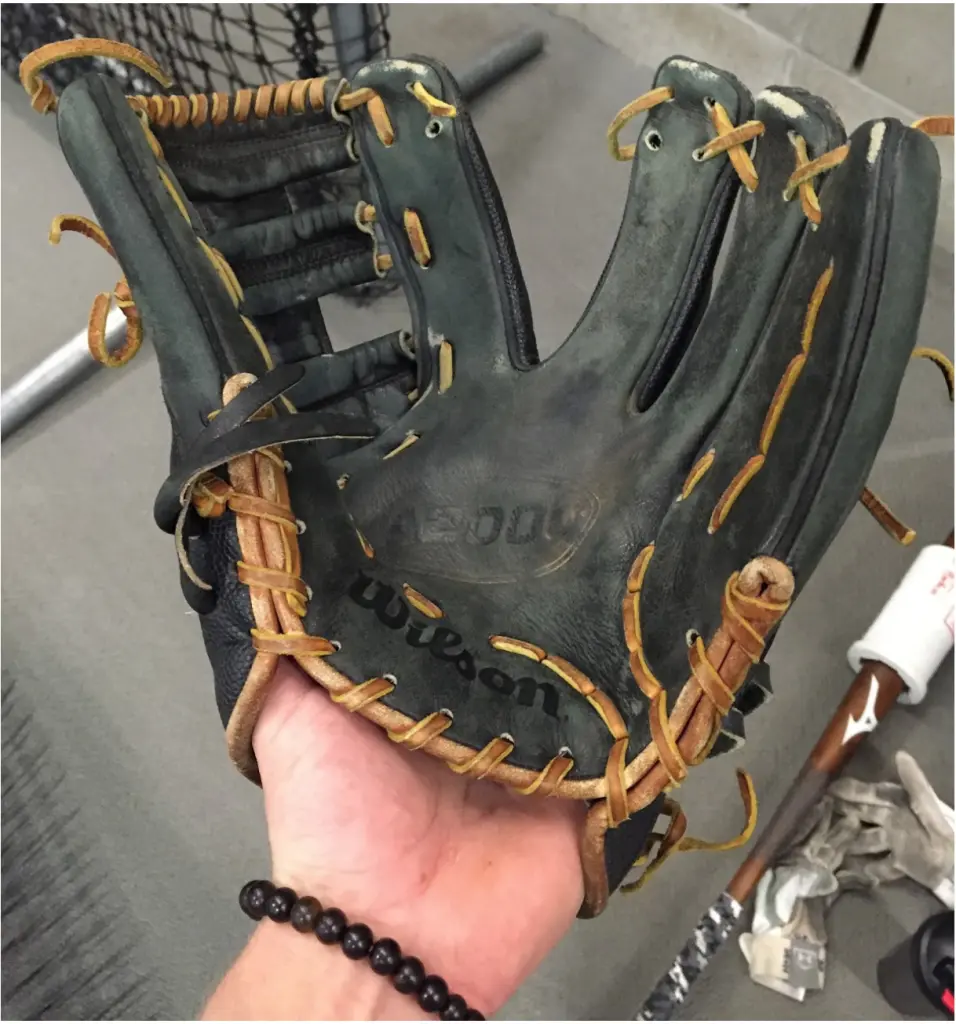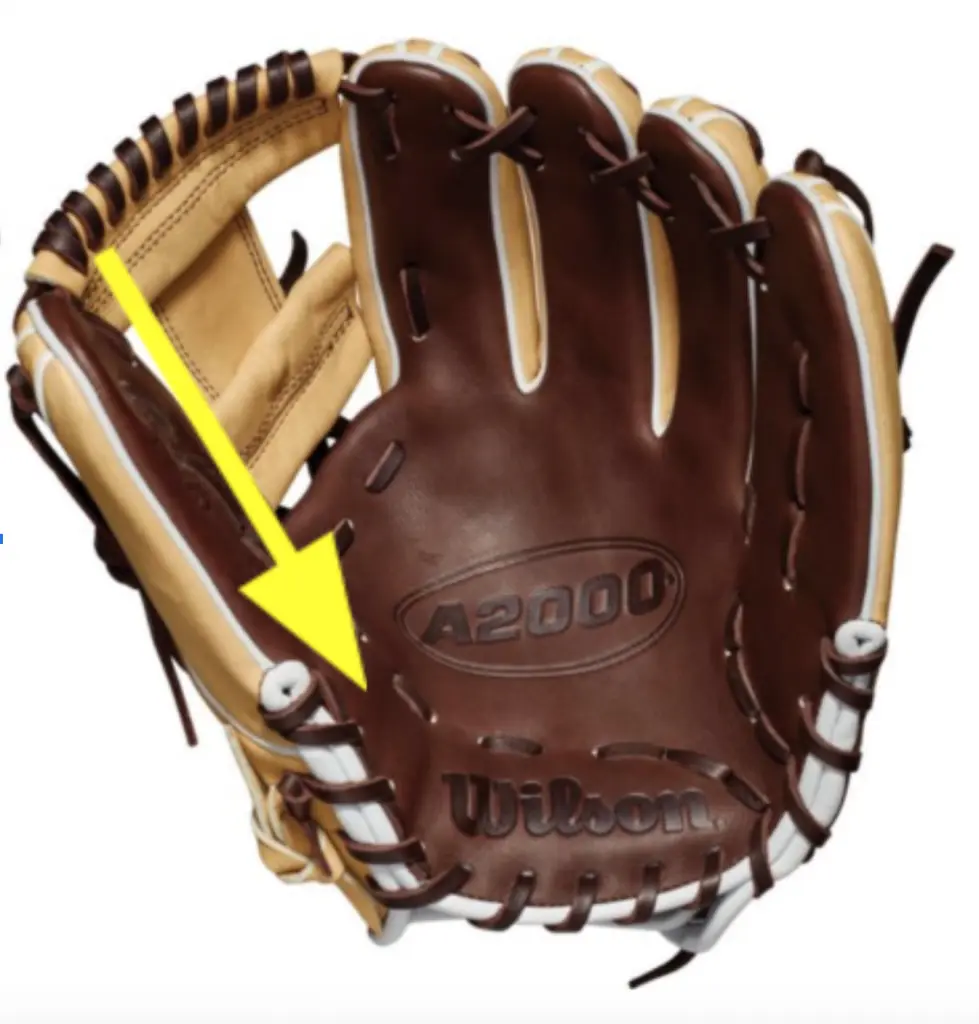Breaking in a baseball glove without a mallet is possible. It requires some patience and a few simple techniques.
A well-broken-in glove is essential for any baseball player. It molds to your hand, making it easier to catch and control the ball. You might think a mallet is necessary for this process. But there are other effective ways to do it.
Using these methods, you can soften the leather, shape the pocket, and ensure the glove fits perfectly. We’ll explore these techniques, helping you achieve a comfortable and reliable glove. Get ready to take your game to the next level with a glove that feels just right, all without needing a mallet.

Credit: www.youtube.com
Choosing The Right Glove
Selecting the right baseball glove is crucial. It affects your performance and comfort. To make an informed choice, consider the material, size, and fit of the glove.
Material Considerations
The material of a baseball glove plays a big role in its performance. Leather gloves are durable and mold to your hand over time. They offer a great fit and feel. Synthetic gloves are a good choice for beginners. They are lighter and easier to break in.
Full-grain leather is the top choice for serious players. It is long-lasting and provides excellent grip. For younger players, pigskin leather is soft and more flexible. It requires less time to break in.
Size And Fit
The size of your glove affects your game. Infielders usually need smaller gloves, around 11 to 12 inches. This size allows quick ball transfer. Outfielders prefer larger gloves, about 12 to 13 inches, to cover more ground.
Catchers use mitts with extra padding. Their gloves range from 32 to 34.5 inches. First basemen need special gloves with more length. They usually choose gloves between 12 to 13 inches.
Fit is crucial. A glove should feel snug but not too tight. Make sure to try on different gloves. Check if it fits well around your hand. Adjustable wrist straps can help get the perfect fit.
| Position | Glove Size |
|---|---|
| Infield | 11-12 inches |
| Outfield | 12-13 inches |
| Catchers | 32-34.5 inches |
| First Basemen | 12-13 inches |
Remember, the right glove can improve your game. Take the time to choose wisely.
Preparing The Glove
Breaking in a baseball glove without a mallet is possible. It starts with preparing the glove properly. This step ensures your glove is clean and ready for the next steps. Let’s dive into the process of preparing your glove.
Cleaning The Glove
First, clean your glove. Use a damp cloth to wipe off any dirt or dust. This helps in maintaining the glove’s leather quality.
For tough stains, use a small amount of mild soap. Rub gently on the stained area. Then, wipe off with a damp cloth. Avoid soaking the glove in water. Excess water can damage the leather.
After cleaning, let the glove dry naturally. Do not use direct heat sources like a hairdryer. Heat can cause the leather to crack.
Applying Glove Oil
Next, apply glove oil. This softens the leather and makes it more flexible. Use a small amount of glove oil. Too much oil can make the glove heavy.
Apply the oil to a soft cloth. Rub the cloth gently over the glove. Focus on the palm and fingers. These areas need the most flexibility.
After applying the oil, let the glove sit for a few hours. This allows the leather to absorb the oil completely. Repeat this process if needed.
| Step | Action | Tips |
|---|---|---|
| Cleaning | Wipe with a damp cloth | Avoid soaking the glove |
| Stain Removal | Use mild soap | Rub gently, then wipe |
| Drying | Let it air dry | Avoid direct heat |
| Applying Oil | Use glove oil on a cloth | Focus on palm and fingers |
| Absorbing Oil | Let sit for hours | Repeat if needed |
Using Warm Water
Breaking in a baseball glove without a mallet can be quite easy. One method involves using warm water. This technique helps soften the leather, making it more pliable. Follow these steps to use warm water effectively.
Soaking The Glove
First, fill a bowl with warm water. Do not use hot water, as it can damage the leather. The water should be warm to the touch but not scalding.
Next, submerge the glove in the water. Ensure the entire glove is soaked. Leave it in the water for a few minutes, around three to five minutes. This will help the leather absorb the water.
After soaking, remove the glove from the water. Gently squeeze out the excess water. Do not twist or wring the glove, as this can misshape it.
Molding The Shape
Once the glove is damp, start working on its shape. Put a baseball in the pocket of the glove. Close the glove around the ball as tightly as you can.
Wrap the glove with some string or rubber bands to keep it closed. Leave the glove in this position for several hours. This helps mold the glove to the shape of a ball.
After a few hours, remove the string or rubber bands. Open and close the glove several times. This helps to loosen the leather further.
Repeat this process if needed. The more you work with the glove, the more it will start to take shape. Remember, patience is key. A well-broken-in glove will feel more comfortable and perform better.

Credit: thehittingvault.com
Ball And Band Method
The Ball and Band Method is a simple way to break in a baseball glove. This technique helps shape the glove pocket. It also softens the leather, making it more comfortable.
Placing The Ball
First, find a baseball or softball. Place the ball in the glove’s pocket. This is where you want the glove to form a deep, comfortable pocket. Make sure the ball sits snugly in the glove.
Securing With A Band
Next, take a wide rubber band or a thick string. Wrap it around the glove to hold the ball in place. Make sure the band is tight enough to keep the ball secure but not so tight that it damages the leather. Leave the glove like this overnight or for a few days. This will help the glove mold around the ball.
Playing Catch
Breaking in a baseball glove can be a challenging task. Playing catch is one of the most effective methods. It helps the glove mold to your hand while improving its flexibility. Regular use during catch sessions can soften the leather, making it more comfortable. Let’s explore some exercises to get the most out of playing catch.
Soft Toss Exercises
Start with soft toss exercises. These help the glove gradually adapt. Use a baseball and gently toss it back and forth with a partner. Aim for around 20-30 catches per session. Focus on catching the ball in different parts of the glove. This ensures even break-in. Keep the tosses light to avoid damaging the glove.
Increasing Intensity
After a few soft toss sessions, increase the intensity. Throw the ball harder and faster. This helps the glove adjust to actual game conditions. Aim for various angles and speeds. This will help the glove become more versatile. Remember to give your glove time to rest between sessions. Overworking it can cause wear and tear.
Using A Glove Conditioner
Breaking in a baseball glove can be tricky. Glove conditioner makes it easier. It softens the leather and speeds up the process. This method doesn’t need a mallet. It’s simple and effective. Let’s discuss how to use glove conditioner properly.
Choosing A Conditioner
Select a quality glove conditioner. Not all conditioners work the same. Look for one made specifically for baseball gloves. Some popular brands are Rawlings, Wilson, and Nokona. Avoid household products like petroleum jelly. They can harm the leather. Read reviews and check recommendations from other players.
Proper Application
Clean your glove first. Wipe off any dirt with a dry cloth. Apply a small amount of conditioner. Use your fingers to rub it in. Cover the entire glove. Don’t use too much. Excess can make the glove greasy. Let the conditioner soak in. This can take several hours. Repeat if needed. The glove should feel softer and more flexible.
Store the glove properly after conditioning. Keep it in a cool, dry place. Avoid direct sunlight. It can dry out the leather. Use a ball or glove wrap. This helps maintain the shape. Regular conditioning keeps your glove in top shape.
Storing The Glove
Properly storing your baseball glove is crucial for its longevity and performance. A well-maintained glove can make a significant difference in your game. Let’s explore the best practices for storing your glove.
Avoiding Extreme Temperatures
Store your glove away from direct sunlight. Heat can dry out the leather and cause it to crack. High temperatures can also warp the glove’s shape. Avoid leaving it in a car on a hot day. Cold temperatures are not good for the glove either. Freezing temperatures can make the leather stiff and less flexible. Always keep your glove in a cool, dry place.
Maintaining Shape
Proper shape is essential for a good catch. Store your glove with a ball inside. This helps maintain the pocket’s shape. You can also use a glove wrap or band. This keeps the glove in a closed position, ready for the next game. Avoid placing heavy items on top of your glove. This can flatten it and ruin its form. A glove stand can be useful for storage. It helps keep the shape intact while not in use.
Regular Maintenance
Regular maintenance of your baseball glove ensures it stays in top shape. It also helps to extend its lifespan. By following a few simple steps, you can keep your glove ready for action.
Cleaning After Use
Always clean your glove after each game. Dirt and sweat can damage the leather. Use a soft cloth to wipe away any dirt. This prevents build-up and keeps the glove clean.
Next, use a small brush to clean hard-to-reach areas. Focus on the laces and seams. These areas often collect the most dirt. A clean glove is a long-lasting glove.
Reapplying Oil
Reapply oil to your glove regularly. This keeps the leather soft and flexible. Use a small amount of glove oil. Spread it evenly with a cloth. Do not soak the glove. Too much oil can harm the leather.
Focus on areas that see the most wear. These include the palm and fingers. Well-oiled leather resists cracking. It also feels better and performs well.
Regular oiling and cleaning make your glove a reliable tool. Treat your glove with care. It will return the favor with top performance.

Credit: thehittingvault.com
Frequently Asked Questions
How Can I Soften A Baseball Glove?
To soften a baseball glove, use a conditioning oil. Apply it evenly to the leather. Then, work the glove with your hands. This helps to break it in.
What Is The Best Way To Break In A Glove?
The best way to break in a glove is to use it regularly. Playing catch and using glove oil also help. Store it properly when not in use.
Can I Use Household Items To Break In A Glove?
Yes, you can use household items like rubber bands and a ball. Place the ball in the glove and wrap it with bands. This helps shape it.
How Long Does It Take To Break In A Glove?
It usually takes a few weeks to break in a glove. Consistent use and proper care can speed up the process.
Conclusion
Breaking in a baseball glove doesn’t need a mallet. Simple methods work best. Use your hands to soften the leather. Play catch often to shape the glove. Apply glove oil to keep it flexible. Store it with a ball inside to maintain form.
Be patient and consistent for the best results. These steps help make your glove game-ready in no time. Enjoy the process and happy playing!

I’m Darrell Boyd, and I live and breathe baseball. As an ardent aficionado of the game, I have established myself as a respected figure in the baseball community through my dedicated blog and insightful contributions to the sport.
Through my blog, I strive to offer comprehensive baseball guides, tips, and tricks that cater to players of all skill levels. Additionally, I provide detailed reviews of crucial baseball products and elements, giving my readers an expert’s perspective on what truly matters in the world of baseball.
With a deep understanding of the sport’s technical intricacies and strategic nuances, I go beyond surface-level analysis, delving into the finer points that define successful gameplay. My meticulous attention to detail and unwavering commitment to excellence have made me a trusted resource for players, coaches, and fans looking to deepen their knowledge and appreciation of the game.
I am dedicated to fostering a thriving baseball culture and am passionate about sharing my wealth of insights with a growing community of fellow enthusiasts. My mission is to continue inspiring and educating others, leaving a lasting impact on the sport that resonates with millions across the globe.
